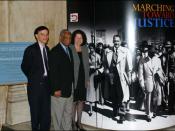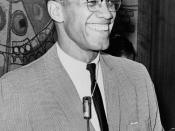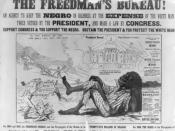In "Higher Learning", the director John Singleton demonstrates college life in an integrated school from various perspectives of race. Malik Williams, a freshman African American athlete is among one of these perspectives. Being black, Williams felt entitled to a sort of advantage. In contrast, Professor Phipps tells Malik he is not "to be treated specially because he is black". As the movie progresses, Malik begins to realize how racist the world is. Much of this realization is due to Fudge, a fellow Black senior. Fudge enlightens Malik, telling him "he is still a slave" in America, and as a race, the Blacks must unite to relieve their containment. Gradually Malik mistrusts anyone who is white, seeing them as the enemy. Racism too exists on the Columbus campus, where clans like "skin heads" and white cops attempt to keep the country as "their belonging". With obvious differences, the two, Black and White, attack each other, both verbally and physically.
These extremist get as far as to killing an African American woman because she is black. The film concludes with Malik learning that "without struggle there is no progress", and treats his racist experiences as an educational process.
Malik's college experience serves as a commentary of the racist world we see today. In this modern world, exist still racist, and even extremist. Although much progress was made in the 50's and 60's, with events such as the Brown v. Board of Education ruling, the film exemplifies that as a nation we are far from equal. At the start, Malik was ignorant, thinking his race gave him leeway. But he later exhibits self reliance, demonstrating "Black Power" as Charmicheal said. Fudge, like Malcolm X, was not afraid to confront White's with racist thoughts. Fudge would question the police's acts, as they...


